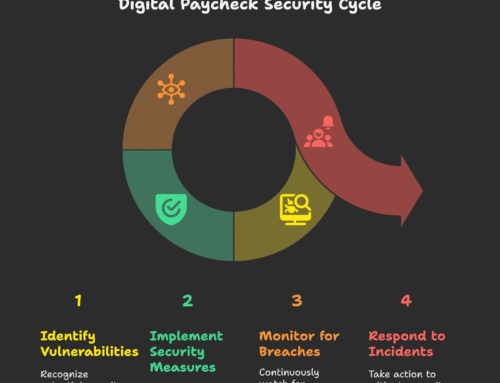Construction contractors and subcontractors need a well-defined workflow to succeed. Workflow refers to the sequence of processes through which a piece of work passes from initiation to completion. It encompasses everything from project planning and bidding to execution and invoicing. By optimizing this workflow, contractors can reduce delays, enhance collaboration, and ultimately deliver projects on time and within budget.
Image by DC Studio on Freepik
Streamlining workflow is essential for several reasons. First, the construction industry is notoriously prone to inefficiencies—project delays and budget overruns are common issues. A streamlined workflow minimizes these risks by establishing clear processes and responsibilities, ensuring everyone involved knows their tasks and deadlines. Additionally, effective workflows can improve communication among teams, leading to better coordination and fewer misunderstandings. By adopting technology to refine these workflows, contractors can enhance their overall productivity and profitability.
Various tools and software are available today that can help contractors and subcontractors streamline their workflows. These solutions can automate repetitive tasks, improve communication, and provide real-time data for better decision-making. Here’s a look at some of the most effective categories of software available:
1. Project Management Software
A. Features of Project Management Software
Project management software is designed to help teams organize, track, and execute projects efficiently. Key features include:
- Task Tracking and Assignment: Easily assign tasks to team members and track progress.
- Communication Tools: Facilitate communication through comments, mentions, and notifications.
- Budget and Timeline Management: Keep projects on track by monitoring timelines and budgets in real-time.
B. Popular Project Management Software Options
- Trello: A visual tool that uses boards and cards to organize tasks and projects.
- Asana: Offers comprehensive task management and project tracking capabilities.
- Monday.com: Provides customizable workflows that adapt to the needs of different teams.
2. Accounting Software
A. Benefits of Using Accounting Software for Contractors
Accounting software can streamline financial management for contractors, offering numerous advantages:
- Streamline Invoicing and Payment Processing: Automate invoicing and keep track of payments effortlessly.
- Track Expenses and Profits: Gain insights into the financial health of your projects in real time.
- Generate Financial Reports: Quickly create reports for analysis and compliance.
B. Top Accounting Software Options for Contractors
- QuickBooks: A well-known accounting tool that simplifies financial management.
- FreshBooks: Offers user-friendly invoicing and expense tracking.
- Xero: Provides robust features for managing finances online.
3. Takeoffs and Estimation Tools
Contractors increasingly rely on advanced tools to enhance accuracy in estimating and bidding on projects. These tools streamline the takeoff process, allowing contractors to generate precise estimates quickly, which is crucial for staying competitive. Here are some key types of takeoff and estimation tools commonly used in the industry:
A. Types of Takeoff and Estimation Tools
- Insulation Takeoff Software
- Purpose: Insulation takeoff software designed to estimate insulation needs in various projects.
- Features:
- Automated calculations for material quantities.
- Integration with design software for accurate measurements.
- Cost estimation based on current market prices.
- Roof Measuring Systems
- Purpose: Used to measure roof areas and slopes accurately.
- Features:
- Aerial measurement capabilities, often using satellite imagery.
- Detailed reports on roof dimensions and features.
- Integration with other software for seamless workflow.
- Commercial Drywall Estimating Software
- Purpose: Tailored for estimating materials and labor costs for drywall installation.
- Features:
- Pre-built templates for various commercial drywall applications.
- Automatic takeoff features for walls, ceilings, and other drywall components.
- Labor cost estimation based on local wage rates.
- Structural Steel Estimator Apps
- Purpose: Focused on estimating costs for structural steel projects.
- Features:
- Tools for calculating material weights and quantities.
- Cost tracking for steel fabrication and installation.
- Detailed reports that can be easily shared with stakeholders.
- General Estimation Software
- Purpose: Comprehensive tools that cover various trades and project types.
- Features:
- Customizable templates for different project types.
- Integration with project management and accounting software.
- Collaboration features for team input and review.
B. Advantages of Using Takeoff and Estimation Tools
- Increased Accuracy: Automating calculations reduces human error, leading to more reliable estimates.
- Time Savings: Quick generation of takeoffs and estimates allows contractors to respond to bids faster, improving competitiveness.
- Enhanced Profit Margins: Accurate estimates ensure that all costs are accounted for, helping to avoid underbidding and potential losses.
- Improved Collaboration: Many tools offer cloud-based solutions, allowing teams to collaborate in real-time, regardless of location.
By adopting these takeoff and estimation tools, contractors can significantly enhance their bidding process, ensuring accuracy and efficiency while maximizing profit margins.
4. Communication Tools
A. Importance of Effective Communication in Workflow
Effective communication is the backbone of a successful project. Miscommunication can lead to costly mistakes and delays, making it essential to establish clear communication channels.
B. Types of Communication Tools for Contractors
- Email: A traditional yet effective tool for formal communications.
- Messaging Apps: Tools like Slack or Microsoft Teams facilitate quick, informal communication.
- Video Conferencing Platforms: Zoom and Google Meet allow for face-to-face meetings, crucial for remote teams.
5. Time Tracking Software
A. Benefits of Time Tracking Software for Contractors
Time-tracking software helps contractors monitor productivity, leading to better project management:
- Monitor Productivity and Efficiency: Identify how time is spent on different tasks.
- Improve Project Estimation and Billing Accuracy: Track hours worked to ensure accurate billing.
- Analyze Time Spent on Different Tasks: Use data to optimize workflows.
B. Popular Time Tracking Software Options
- Harvest: Offers easy tracking and invoicing features.
- Toggl: A simple tool for tracking time across various tasks and projects.
- Clockify: Provides robust tracking capabilities along with project management features.
6. File Management Tools
A. Importance of Organized File Management in Workflow
Proper file management is crucial for maintaining organization and ensuring that all team members have access to necessary documents.
B. Types of File Management Tools for Contractors
- Cloud Storage Platforms: Services like Google Drive and Dropbox allow for easy file access and sharing.
- Document Management Systems: Tools that help organize, store, and track documents securely.
- Collaboration Tools for File Sharing: Enable team members to work on documents simultaneously, improving productivity.
In conclusion, optimizing workflow through the use of technology is a game-changer for contractors and subcontractors. By implementing project management, accounting, estimation, communication, time tracking, and file management software, contractors can significantly enhance their efficiency, reduce costs, and improve project outcomes.
The construction industry is evolving, and embracing these tools is not just an option; it’s a necessity for those looking to thrive in a competitive market. Take the first step today—explore the software that best fits your needs, and start streamlining your workflow for greater success.







Leave A Comment